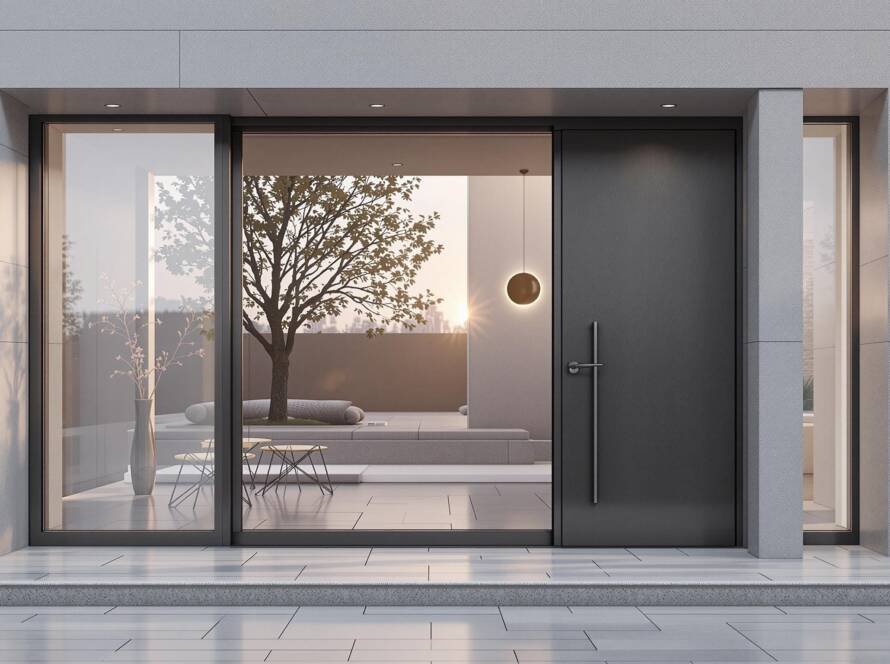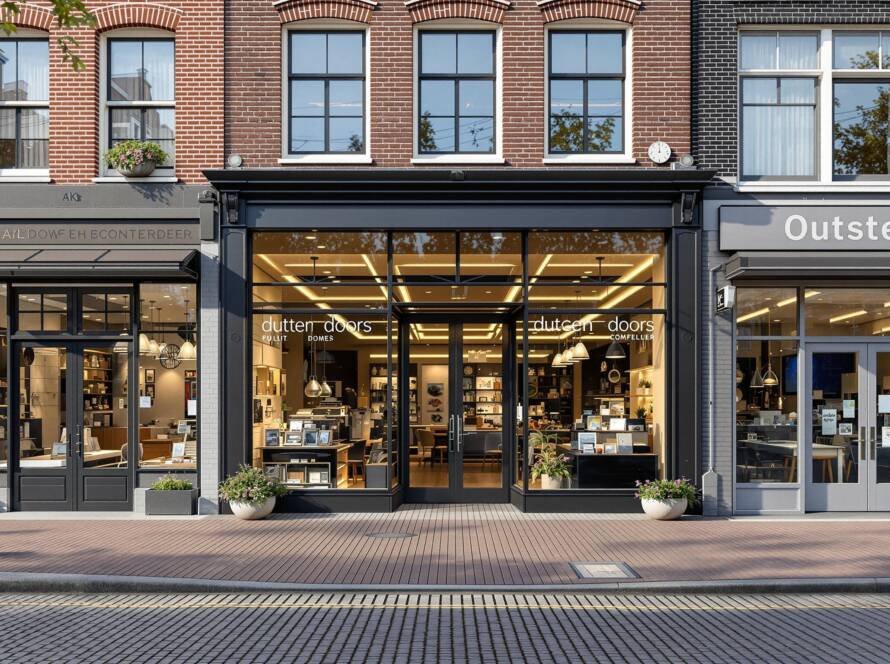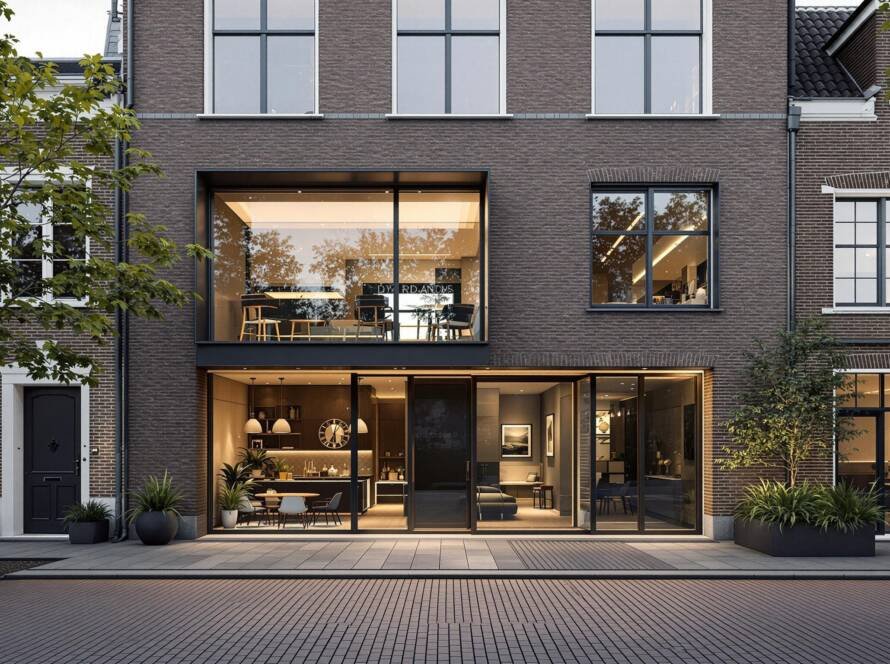Introduction
As the awareness of accessibility increases in the Netherlands, it becomes vital to focus on ergonomic door designs that cater to various user needs. Ergonomic doors are crucial for creating barrier-free homes that ensure comfort and ease of access for everyone, including elderly individuals and those with mobility challenges. This article delves into the concept of ergonomic doors, their importance, and practical tips for implementation in Dutch homes.
Basic Concepts
Before we explore the various aspects of ergonomic door designs, let’s understand some key terms related to accessibility in home design:
- Ergonomic Design: A design approach that prioritizes user comfort and usability, ensuring that doors are easy to operate without strain.
- Accessibility: The quality of being easy to obtain or use, particularly for people with disabilities.
- Barrier-Free Entryways: Entryways designed to provide easy access without obstacles, accommodating users with different mobility levels.
- User-Friendly Installations: Installations that enhance usability for all individuals, making everyday tasks such as entering and exiting more manageable.
Importance of Ergonomic Door Designs
Ergonomic doors play a significant role in enhancing the overall accessibility of Dutch homes. Addressing the needs of diverse user groups enables a more inclusive living environment. Here are some reasons why ergonomic door designs are paramount:
- Improved Accessibility: Accessibility boosts the quality of life for those with physical limitations, fostering independence.
- Increased Safety: Properly designed doors can reduce the risk of accidents, such as falls or injuries during door operation.
- Enhanced Aesthetics: Ergonomic designs can also be visually appealing, integrating seamlessly with modern interior trends.
- Future-Proofing Homes: Incorporating accessible designs today prepares homes for diverse future needs, making them adaptable.
Types of Ergonomic Door Solutions
In the quest for accessible home design in the Netherlands, various types of ergonomic door solutions are applicable. Below are some popular options:
1. Sliding Doors
Sliding doors are an excellent choice for accessibility. They require minimal space and can be operated easily, allowing smooth entry and exit. Typically, sliding doors are designed without thresholds, eliminating potential trip hazards.
2. Pocket Doors
Pocket doors slide into the wall, making them an efficient space-saving solution. Their seamless operation enhances accessibility, ensuring that users can pass through narrower spaces effortlessly.
3. Bi-Fold Doors
Bi-fold doors offer a wide opening when fully opened, making them ideal for larger spaces or patios. Their ease of operation and broad entryway provide excellent accessibility for users of all ages.
4. Lever Handles
Lever handles are more ergonomic than traditional knobs. They can be operated with a simple push or pull motion, making them user-friendly for individuals with limited hand strength.
5. Automatic Doors
Automatic doors enhance accessibility by minimizing the manual effort required to open them. They work well in various settings and can be integrated into residential designs for added convenience.
Trends in Ergonomic Door Designs in the Netherlands
The following table summarizes current trends impacting ergonomic door designs in Dutch homes:
| Trend | Description | Impact on Accessibility |
|---|---|---|
| Minimalist Aesthetics | Clean lines, simple designs, and functional beauty are favored. | Reduces visual clutter, enhancing the user experience. |
| Sustainable Materials | Focus on eco-friendly and recyclable materials. | Promotes environmentally responsible designs that are often easier to handle. |
| Smart Home Technology | Integration of technology for enhanced functionality. | Allows for automatic adjustments based on user needs, increasing convenience. |
| Custom Solutions | Personalized designs tailored to individual needs. | Ensures maximum usability and comfort for diverse populations. |
Material Considerations for Ergonomic Doors
The choice of materials when designing ergonomic doors directly impacts their functionality, durability, and overall efficiency. Here are some commonly used materials with their benefits:
- Wood: A classic choice offering warmth and aesthetics, but requires regular maintenance.
- Steel: Provides robust security and durability. Steel doors are weather resistant and require minimal upkeep.
- Fiberglass: Combines durability with energy efficiency. Fiberglass doors can mimic the appearance of wood without the associated maintenance issues.
- Aluminum: Lightweight and resistant to corrosion. Aluminum doors are energy efficient and require little maintenance.
Practical Tips for Implementing Ergonomic Door Designs
When considering ergonomic door designs for Dutch homes, adhere to the following recommendations:
- Assess Individual Needs: Evaluate if the user has limited mobility or other special requirements. Tailor door selections accordingly.
- Opt for User-Friendly Controls: Choose lever handles or push buttons that are easy to grasp and operate for all users.
- Ensure Sufficient Door Width: Select doors that are wide enough to accommodate mobility aids such as walkers or wheelchairs.
- Prioritize Smooth Operation: Ensure doors glide effortlessly, avoiding issues with sticking or difficult opening mechanisms.
- Consider Thresholds: Opt for designs without thresholds to prevent potential tripping hazards.
- Incorporate Lighting: Ensure doorways are well-lit, improving visibility and safety.
Conclusion
Incorporating ergonomic door designs into Dutch homes is essential for enhancing accessibility and ensuring that all users can navigate spaces comfortably and safely. From sliding doors to innovative materials, the options available today create an inclusive environment that prioritizes usability. By understanding key elements and evolving trends, homeowners can make informed decisions that not only elevate aesthetic appeal but also provide ease of access for everyone in the household. Embrace these ergonomic solutions to create a comfortable and welcoming living space tailored to the diverse needs of Dutch residents.




